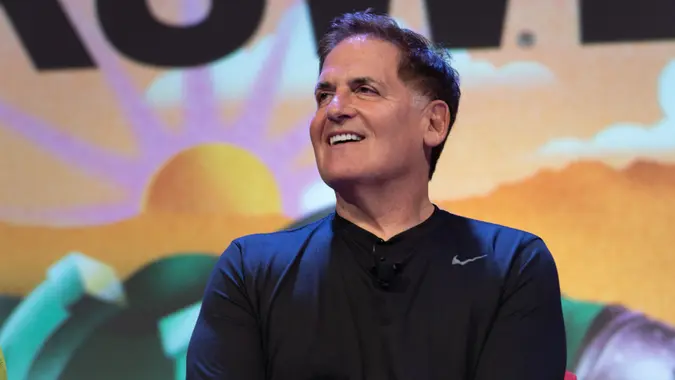This Is How the Top 1% Invest Their Wealth

Commitment to Our Readers
GOBankingRates' editorial team is committed to bringing you unbiased reviews and information. We use data-driven methodologies to evaluate financial products and services - our reviews and ratings are not influenced by advertisers. You can read more about our editorial guidelines and our products and services review methodology.

20 Years
Helping You Live Richer

Reviewed
by Experts

Trusted by
Millions of Readers
The top 1% of Americans have around $11 million in net worth at a minimum, according to Forbes. Some of these high-net-worth individuals acquired their wealth through inheritance, while others have built their fortunes from the ground up. One thing is for certain, though: Staying wealthy takes some strategic planning.
Here’s how the top 1% stay wealthy, build more wealth and give their wealth away.
They Diversify Their Investments
If you know anything about investing, you’ve likely heard the mantra, “Diversify, diversify, diversify.”
“The top 1% typically employ a multifaceted approach to maintain their wealth,” said Khwan Hathai, a certified financial planner and certified financial therapist at Epiphany Financial Therapy. “This includes diversifying investments across a range of asset classes, which is not just a financial strategy but also a psychological buffer against market volatility.
“Their investment portfolios often encompass stocks, bonds, real estate and alternative investments like private equity. This diversity helps mitigate risk while providing multiple streams for wealth accumulation.”
They Protect Their Assets
It’s one thing to be able to acquire wealth, and it’s quite another to hang on to it.
“In terms of risk management,” Hathai said, “the wealthy often employ sophisticated strategies to protect their assets. This involves not only financial expertise but also a mindset that prioritizes long-term security over short-term gains.”
They Utilize Debt Strategically
“[The wealthy] are adept at using leverage,” said Hathai, “utilizing debt strategically to amplify investment potential, [which is] a practice that requires both financial acumen and a strong risk tolerance.”
They Have Access to Exclusive Investment Opportunities
When you’re very wealthy, you’re likely to have access to investments that people who aren’t in your wealth class will not.
“When it comes to building more wealth,” Hathai explained, “the top 1% often have access to exclusive investment opportunities. This access is part of a broader network effect, where wealth opens doors to unique opportunities, perpetuating the cycle of wealth accumulation.”
They Never Stop Learning
Making the most of great amounts of wealth requires financial acumen, and the top 1% knows that.
“They also demonstrate a commitment to continuous learning and adaptation,” Hathai said, “staying informed about economic trends and adjusting strategies as necessary.”
They Engage in Philanthropy
Sometimes, investments don’t result in direct monetary returns, but that doesn’t mean they are any less valuable.
“Philanthropy is a significant aspect of how the top 1% distribute their wealth,” shared Hathai. “Many engage in charitable activities, not just as a means of giving back, but also as an expression of their values and legacy. This aspect of wealth distribution goes beyond financial transactions; it’s about impacting society and shaping a legacy that aligns with their personal beliefs and values.”
They Devote Time to Estate Planning
Investing time toward planning for the future is key to the preservation of wealth.
“Effective estate planning is another key aspect, ensuring that wealth is passed on according to their wishes,” Hathai said. “This planning often involves intricate strategies to minimize taxes and preserve wealth for future generations, reflecting a deep-seated desire to maintain and perpetuate their legacy.”
They Take Their Wealth Seriously
The top 1% know that having extreme wealth isn’t just about what it can do for them — it’s much more impactful.
“The relationship the top 1% have with their wealth is often characterized by a sense of stewardship and responsibility,” said Hathai. “They view their wealth not merely as a means for personal benefit but as a resource with the potential for broader societal impact. This perspective is crucial in their decision-making processes regarding wealth management, growth and distribution.”
Takeaway
“The financial strategies of the top 1% are underpinned by a complex interplay of financial knowledge, strategic planning and a mindset that emphasizes stewardship, legacy and societal impact,” said Hathai. “Their approach to wealth is holistic, considering not just the monetary aspect but also the psychological and social dimensions of wealth accumulation and distribution.”
More From GOBankingRates
 Written by
Written by  Edited by
Edited by 

























